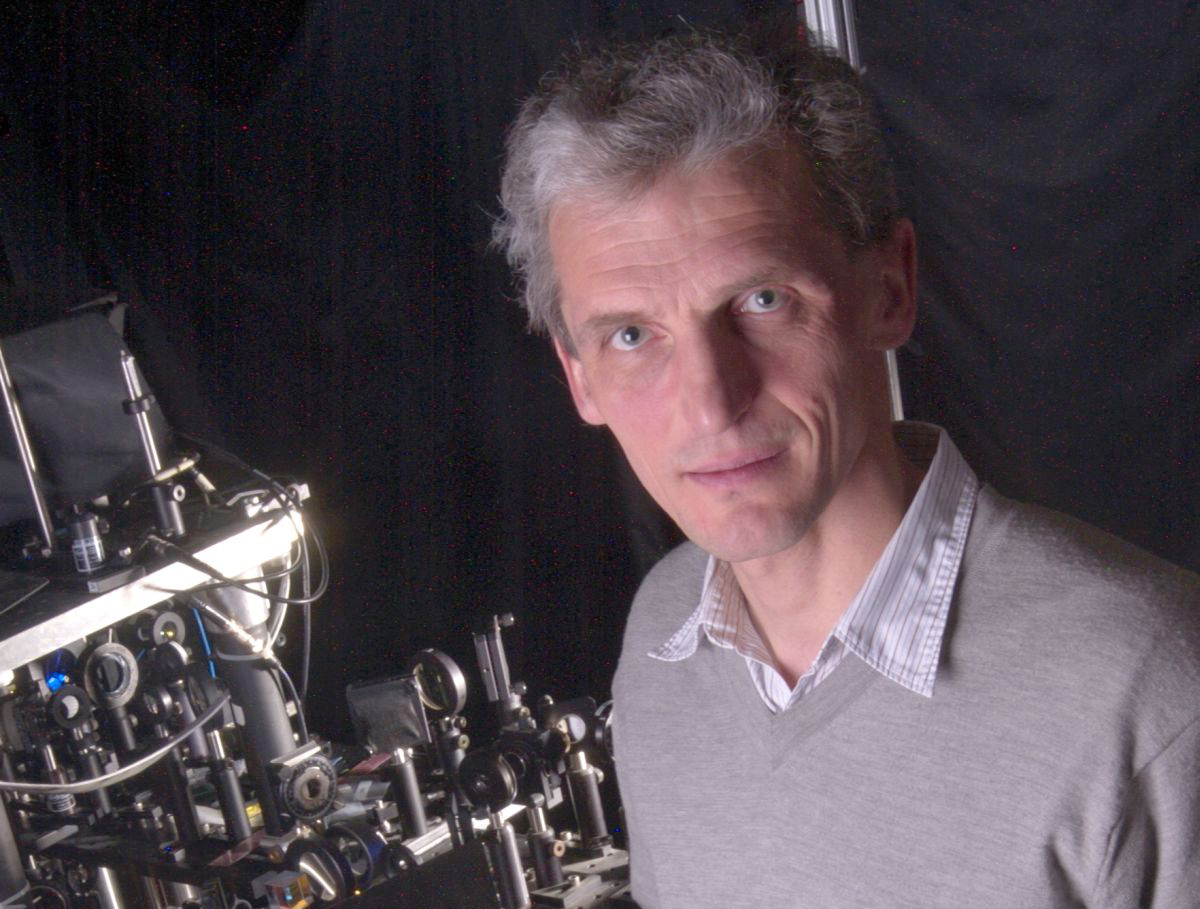Nobel laureate Wolfgang Ketterle from MIT visited his colleagues of the Kavli Institute earlier this month to talk about the quest for new forms of matter.
Ketterle explores new forms of matter in ultra cold gases. He was rewarded the Nobel prize in physics 2001 (together with Eric Cornell and Carl Wieman) for the observation in 1995 of a Bose-Einstein condensate of sodium atoms. A Bose-Einstein condensate (BEC) is a very peculiar state of matter obtained near zero Kelvin, at which point quantum effects become apparent on a macroscopic scale. “At that temperature”, Ketterle said in 2001, “the atoms form a giant meta wave; they dance together as if they were one giant atom.”
Are you still working on Bose-Einstein condensates?
“We still use techniques we invented twenty years ago to make Bose-Einstein condensates to get to low temperatures. But most of my research now is directed towards unravelling the mysteries of quantum magnetism. One has to move on.”
For that research you also need extremely low temperatures. You even succeeded in reaching negative temperatures. How is that possible?
“Ah yes. That needs explanation. Those negative temperatures were actually hotter than positive temperatures. It confuses people. Negative temperatures are related to an inverted form of matter where high energy states are more numerous than low energy states. You could say that negative temperature is like a pyramid turned upside down. It is an equilibrium and the physics of this matter are quite interesting.”
A pyramid turned upside down?
“Yes. In a gas particles can move slowly and particles can move quickly. They follow the Boltzmann distribution, which is an exponential distribution. Normally there are more slowly moving particles and there is a tail of particles that move faster and faster. But it is possible, in special systems, that this distribution is inverted. That is something really strange. The sign has changed and that means negative temperature.”
What can you and the people from the Kavli Institute learn from each another?
“Our scientific goals are the same; to understand and develop novel materials. But our methods couldn’t be more different. In conventional nano science you work with real materials, materials with the density of this table (he knocks on the table). In the field of ultra-cold atoms we work with atomic gasses which are a billion times more dilute. Yet because they are so cold they behave like matter with a much higher density. In the end however, the kind of materials we realize – conductors, superfluid’s, quantum magnets – may follow the same equations. So we follow each others work and there is cross fertilization.”
You said that you would like to replicate some discoveries done here in Delft with cold dilute gas. Can you give an example?
“Well, this place is famous for the first topological observation of Majorana fermions. There are quite a number of proposals for how Majorana fermions could be realized with ultra cold atoms. It may be little bit of a stretch, but we want our challenges.”
There has been some speculation about Prof. Leo Kouwenhoven of TU Delft one day winning the Nobel prize for his discovery of the Majorana fermions. What do you think of that?
“Discoveries are like trees growing in the scientific landscape. When BEC had been discovered it was as if something was coming out of the earth. People were running around it and saying look it becomes a tree, it becomes a tree. But I said ‘no you have to wait, you have to let it grow and develop’. Soon though more than a hundred labs from all over the world were taking BEC in all different directions. And that made it big. With Majorana fermions it is the same thing; you should allow a small plant to grow into a big tree.”



Comments are closed.